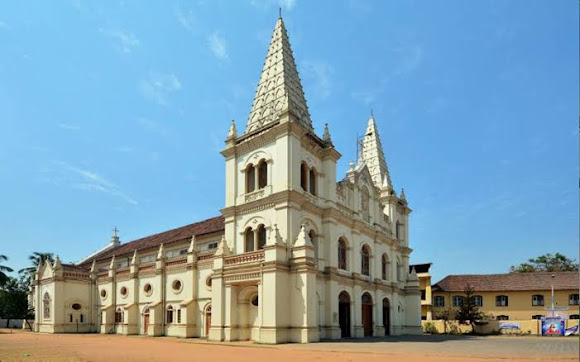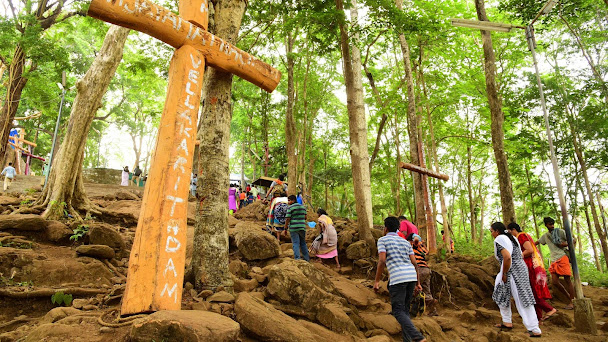Santa Cruz Cathedral: A story of antiquity
Any visitor who comes to Fort Kochi apart from its colonial culture is also attracted to structures which have stood witness to the times of change & still bring out the beauty of how they were centuries back. One such structure in Fort Kochi is the beautiful Santa Cruz Cathedral which for centuries has served Catholics as a place of reverence towards the Lord. The story of its origin is also laced with many incidents of destruction & reconstruction. It is also to be known that the cathedral became the venue for many important events in history.
The current church one sees is over a century old but its foundation is over 5 centuries old. The famous navigator from Portugal, Vasco Da Gama came to the shores of Kozhikode in 1498 opening the route for the Europeans to do trade. The arrival of Da Gama created an environment of distrust among the Zamorins resulting in the Portuguese moving south & finding the Cochin Raja suitable for their trade. After the first expedition, Vasco Da Gama did come back but it was the arrival of the Portuguese commander Dom Afonso Albuquerque that changed the fortunes for them as he assisted the Cochin Raja win the battle against the Zamorin. The battle ensued as the Zamorins did not approve of the Portuguese conducting trade along the Arabian sea. The victory of the Cochin Raja also allowed the Portuguese gain an upper hand in trade along the south port & they asked the resident Raja land in reward for their help in battle. The Cochin Raja approved this request & gave land to the commander to build a fort along the port. The Portuguese became an important community in Cochin & the celebrated viceroy Dom Francesco De Almeida commissioned the construction of a church in 1505. The church was dedicated to the Holy Cross & so was named Santa Cruz church within the congregation of the Catholics. The St Francis church where the body of Vasco da Gama was cremated was also built during the same time nearby & they were both constructed using wood in similar designs.
The Santa Cruz church over the centuries has seen violent aggressions against its existence. The church was raised to the distinction of a Cathedral in 1558 when Pope Paul IV recognised Cochin as the second diocese in India after Goa which was ruled by the Portuguese. By the middle of the 17th century, the advance of the Dutch proved difficult for the Portuguese to withstand as they kept losing important ports along Malabar. The superiority of the Dutch army was acknowledged by the Portuguese & by 1660 they had to give up their strongest port of Cochin when the Raja became an ally of the Dutch. This change of power proved to be destructive for the Catholics of Cochin as the Dutch were Protestants & they destroyed churches belonging to the Catholic congregation. The Dutch however are said to have spared only the St Francis church & the Santa Cruz Cathedral but they stopped members entry by turning it into garrison for ammunition storage. It is said that the Dutch destroyed the altar & granite pillars inside to construct storehouses. The church for over a century continued to function as a storehouse under the Dutch until the East India company defeated them towards the end of the 18th century. The British wanted to establish their name on all colonies & the storehouse seemed a liability for them who razed the whole structure in 1795. The church was completely destroyed to build a guard house. The church was lost in time for over a century and it was only in the year 1897 that the plan to reconstruct this lost structure was initiated by a noble missionary. The plan was finalised by the Bishop of Cochin & the new church was reconstructed to its current grandeur in 1905. The cathedral was constructed in the same land over the old church foundation but in an elaborate design.
It is important to know that the earlier church had an edifice made of stone which during the 16th century was not commonly found on churches as most churches were built using bricks. When the Dutch destroyed the church interiors only a decorated granite pillar could be salvaged which was preserved by the devout Catholics & is preserved today inside the new structure. The Santa Cruz cathedral construction was based on the architecture of Gothic design with arched pillars & a large raised altar. The exterior of the church has two lofty high spires & they are the whole outer walls are painted in bright white. The interior of the church is one where one gets the feeling of awe. The Italian styled curved walls which join to make the pillars divide the church into 3 parts with a long prayer hall. The main altar is indeed a grand piece of artistic marvel & it should certainly be one as it was painted by the famous Italian artist Antonio Moscheni. The most striking artwork is the replica of the Last Supper painted by Leonardo Da Vinci along with the other mural & fresco works done on the columns. All the paintings are done on large canvases & depict the crucifixion of the Lord on the holy cross. The interior of the church is also decorated by natural light which creates a fusion of colours due to the stained glass design on the window panes.
The church in many ways is a classic example of how different cultures merged in creating a heritage for us all to see even today. This historic importance & heritage value of the cathedral is possibly the reason why it was raised to the status of Basilica in 1984 by the Pope making it one among the other eight cathedrals in Kerala to have the status of a Basilica. The Santa Cruz Basilica now is a signature monument of Fort Kochi & one which is to be visited by all not just for its reverence but also to understand its antiquity.




Comments
Post a Comment